Admittedly, Italy is full of old stuff. There’s no need to go seeking it out, because it’s everywhere, much of it right there where you can’t miss it. There’s something a little overachieverish about searching for hidden treasures in a showroom chockfull of masterpieces.
But much of the old stuff in Italy isn’t for sale, and you can’t take it home, even if you’re willing to carry it in your arms a half mile up a very steep hill the way I did with a 50 pound and not even all that old olive oil jug. That’s why you go to an antique market after all—with the hope of finding that random object that everyone else has overlooked, and that can now be part of your life, even if it really is a lot heavier than you thought.
And so it was that C and I wound up in the Tuscan town of Arezzo earlier this month, at the largest antique fair in Italy. Held on the first Sunday and preceding Saturday each month, the Fiera Antiquaria di Arezzo stretches out to all the piazzas and winding alleys of the city’s centro storico, with every open space brimming with stalls, and lots of permanent storefronts as well. Even on a Sunday in the middle of winter, it’s bustling with buyers and sellers, locals greeting one another on their leisurely passeggiatas, and plenty of foraging foreigners with farmhouses or a villa to furnish.
Due to the law of physics as it relates to space and matter (as in: no matter how much we like it, we have no more space), we had forbidden one another to visit any stall displaying books, vinyl records or furniture. Instead C and I were focused this day on things for the garden—the great outdoors offering an expanse that at least so far has defied our ability to fill it. Specifically, we were looking for flower pots: large terracotta or stone containers with a little patina to them.
Something old and heavy. So far as I could tell, that was our holy grail.
Which was our first mistake. As any market shopper knows, the best approach is to browse. As soon as you identify a particular object that you need, the whole exercise becomes a scavenger hunt. The elusive object is always just around the next corner or buried in the asthma-inducing back room of a dusty shop.
By the time C & I sank into our chairs for lunch on the Corso Italia, we’d seen rustic farm tables and elegant inlaid desks, Italo-cool lamps from the 1960s and statuary from the 1860s. Yet despite being in the heart of Tuscany, we’d only seen one terracotta pot and it was far too small and practical to be of any interest to us. We were already discussing whether the afternoon might be better spent exploring the churches and museums of a town we knew little about.
Arezzo itself is something of a hidden treasure, to the extent that a major city in Tuscany, repository of countless artistic and architectural riches and the birthplace of Renaissance painter and writer Giorgio Vasari can be considered hidden. Compared to places like Siena, San Gimignano, Pisa or Lucca, Arezzo is less likely to show up on a tour group itinerary. On Sunday afternoon, there were lines for the Basilica of San Francesco and the blockbuster Vasari show at the Galleria D’Arte Contemporanea . But I suspected that by Monday morning when the stalls had come down, we would have the churches and piazzas to ourselves.
“So maybe we should at least take a look at the street that leads up the hill,” C suggested. “We’ve not gone that direction yet.” Never underestimate the restorative powers of a bowl of ribollita.
We followed the road not taken all the way up to the top of the town, where the Cattedrale dei San Pietro e Donato, perches like a statue on a pedestal, looking out over the regal Tuscan countryside. Then we followed another narrow alley all the way back down. We were almost to the base of the hill when we saw it:
A great, hulking terracotta jug, the kind that could keep a farmer’s family well-stocked in olive oil for a long winter. Stick a lemon tree in it and it had the pedigree to turn an aspiring vacation home backyard into a classical garden for the ages. Unfortunately, it was at the bottom of the hill. And the only place available to park our car was at the top, just outside the Cathedral.
When the shopkeeper finished his spaghetti and sauntered over with his dog to talk price, I tried to explain where our car was. He winced a little. You could hire a man with a wheelbarrow he suggested. But first you’d have to find him. For obvious reasons, they don’t usually work the bottom of the hill.
Minutes later, I was stumbling and snorting up the cobblestoned streets, weaving through a parade of shoppers, and baby carriages, and those guys careening by with their wheelbarrows— all while slow-dancing up a ski slope with my rotund terracotta partner. Even the carabinieri who yelled at me about parking the car gave me a grudging nod of respect when I reached the top, as if I was the final finisher in a marathon. Which I suppose I was.
I was still celebrating my accomplishment and nursing my wounds the next morning when, as anticipated, Arezzo was as tranquillo as a small village. We savored Piero Della Francesca’s Storie della Vera Croce frescoes in solitude, then headed out of town. With our jumbo-sized market prize rolling around in the trunk, we rounded the first corner leading out of the city center and let out a collective gasp.
Directly in front of us, on perfectly flat ground with parking lot attached, was a roadside emporium offering:
Vasi In Terracotta, Old and New, All Shapes and Sizes. Everything on Grande Sconto!
“Too easy” C said, as we drove right by.

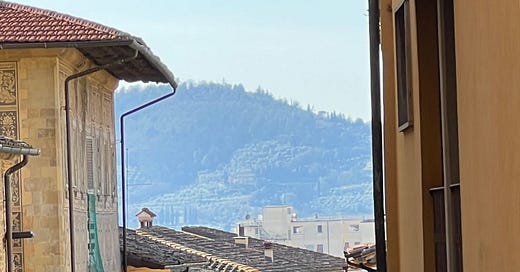



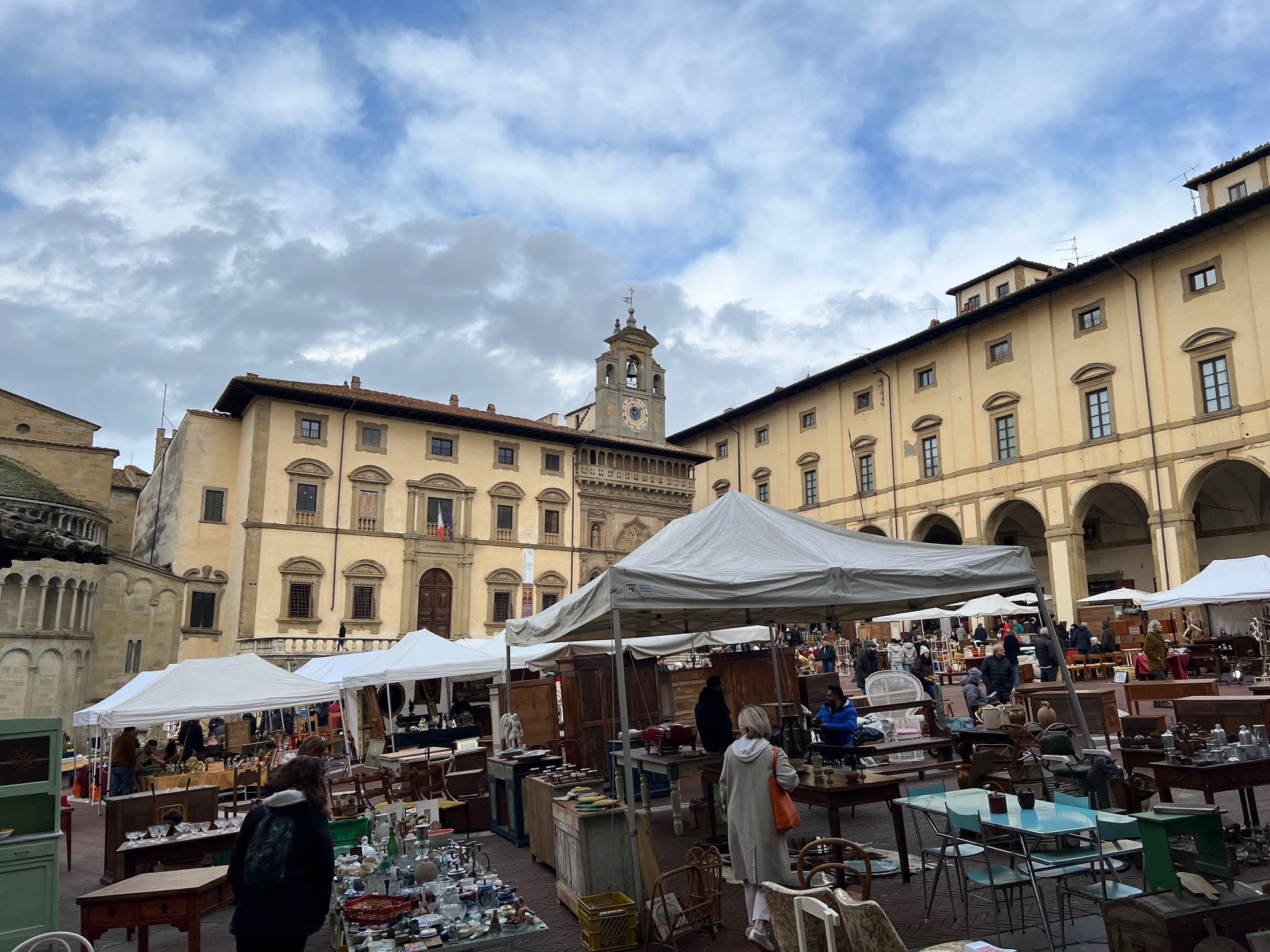
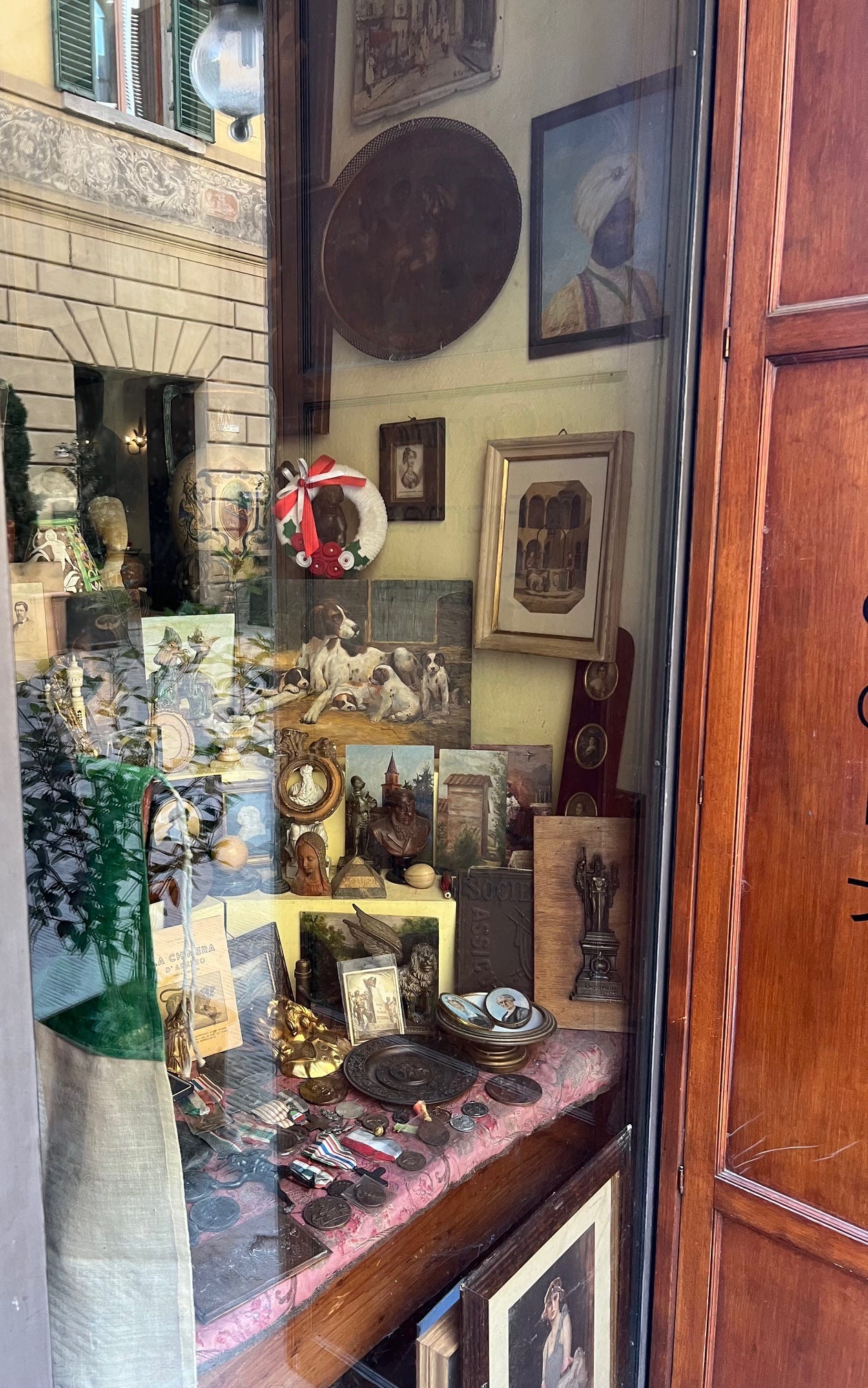
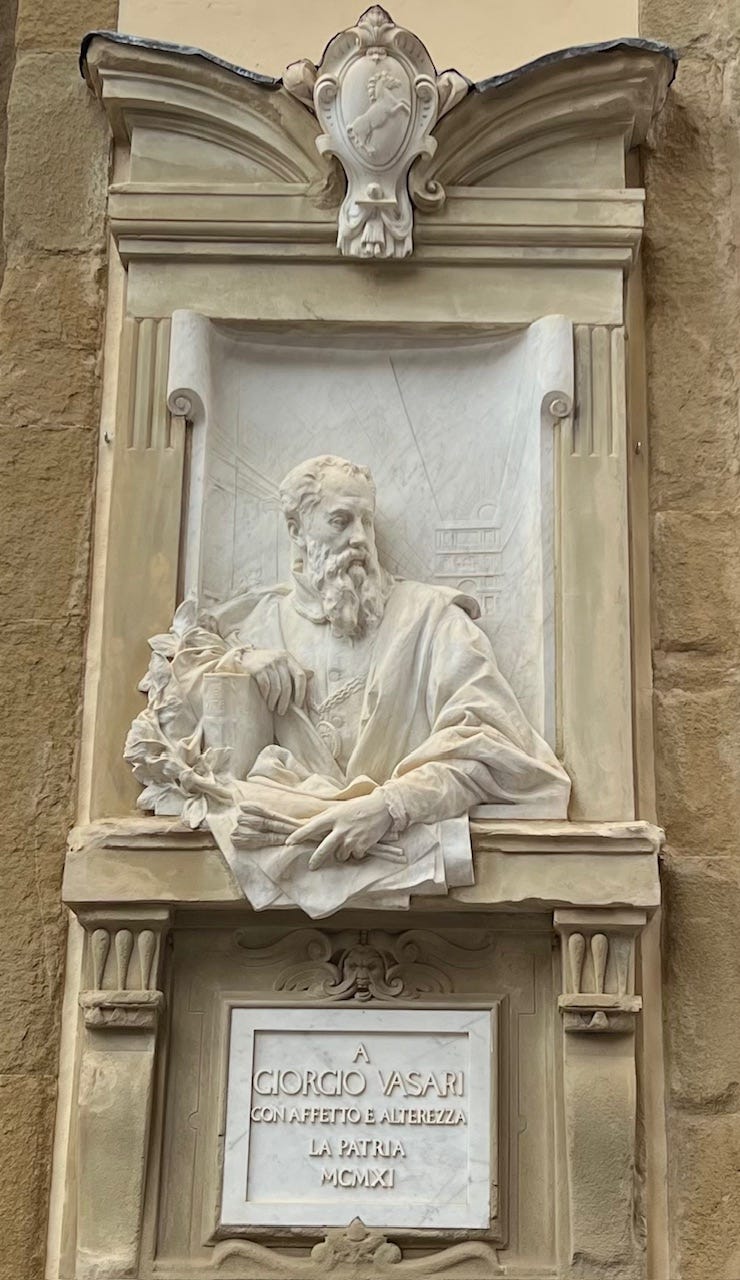
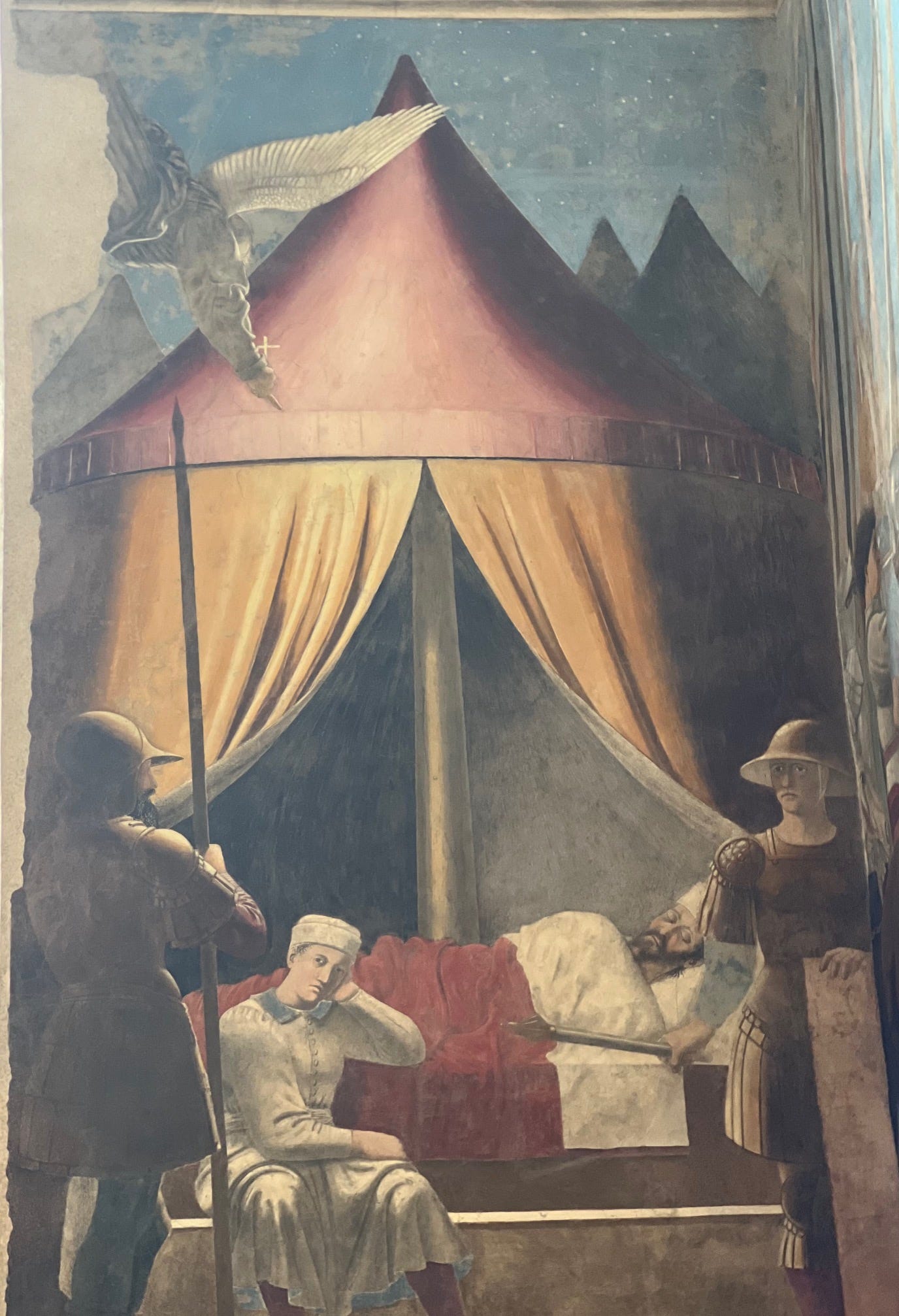
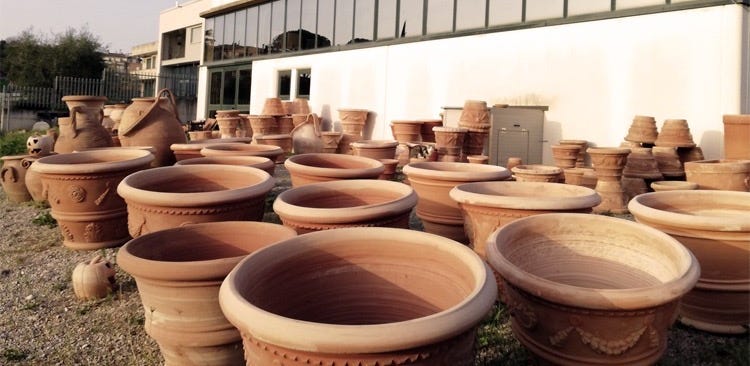
They are around-- I managed to get behind one at an inopportune moment. But I have no idea how you find them when you need them. It's a wonderful market, but obviously, a hill town presents certain challenges. Next time, I'm buying books and vinyl records :) You're very lucky to live nearby-- such a beautiful town and area.
Next time try the market in Pissignano, which is enormous and much more affordable. Also, photo of your find, please!